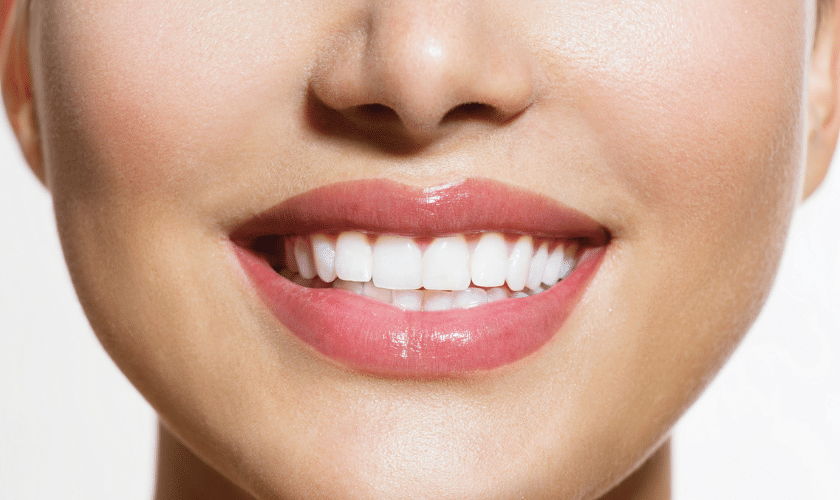In an era where a perfect smile is pursued, a set of white teeth has become an important symbol of modern people’s social confidence. However, daily diets such as coffee, tea, and red wine, as well as habits like smoking, can gradually make teeth lose their luster. This article systematically explains the scientific principles of teeth whitening, a comparison of mainstream methods, and long-term care plans to help you achieve a bright smile safely and effectively.

I. Underlying Causes of Teeth Yellowing
- Extrinsic Staining
Dietary factors: Pigments in dark-colored foods such as coffee, tea, red wine, and soy sauce adhere to teeth.
Unhealthy habits: Tar deposits from smoking.
Inadequate oral cleaning: Long-term accumulation of plaque forms tartar. - Intrinsic Discoloration
Aging factors: As we age, tooth enamel thins, making the yellow dentin more visible.
Medication effects: Tetracycline antibiotics may cause internal staining of teeth.
Pulp lesions: Non-vital teeth often appear grayish-black. - Congenital Factors
Abnormal tooth color caused by enamel hypoplasia or poor calcification.
II. Comparison of Mainstream Teeth Whitening Methods
| Method | Principle | Effect | Duration | Suitable For |
|---|---|---|---|---|
| Laser Teeth Whitening | Hydrogen peroxide gel + blue light catalysis | Immediate results | 1–2 years | Those seeking instant whitening |
| At-Home Whitening Strips | Slow release of low-concentration peroxide | Results in 2 weeks | 3–6 months | Mildly stained teeth |
| Whitening Toothpaste | Abrasives + low-efficiency bleaching agents | Limited improvement | Requires continuous use | Daily maintenance users |
| Porcelain Veneers/Crowns | Physically covering discolored teeth | Permanent change | 10+ years | Severely discolored teeth |
III. Detailed Explanation of Professional Dental Whitening Procedures
- Standard Laser Whitening Steps
Oral examination: Rule out contraindications such as dental caries and gingivitis.
Shade recording: Use a VITA shade guide to record the initial tooth color.
Gum protection: Apply a light-cured resin barrier.
Gel application: Layered treatment with 35% hydrogen peroxide gel.
Blue light irradiation: 3 sessions of 15-minute light exposure.
Post-treatment care: Use anti-sensitive toothpaste to consolidate results. - At-Home Whitening Plan
Professionally customized trays + 10% carbamide peroxide gel.
Wear at night for 2–4 weeks, with regular follow-ups for adjustments.
IV. Whitening Safety Warnings and Side Effect Management
1. Common Adverse Reactions:
- Tooth sensitivity (usually relieves within 72 hours).
- Gum irritation (mostly due to gel contact with soft tissues).
- Effect rebound (directly related to eating habits).
2. Professional Recommendations:
- Use potassium nitrate-containing anti-sensitive toothpaste 2 weeks before treatment.
- Follow a “white diet” (avoid dark-colored foods) for 48 hours after treatment.
- Smokers should cooperate with a smoking cessation plan to maintain results.
- Do not undergo professional whitening more than 2 times a year.
V. Scientific Verification of Natural Whitening Methods
1. Effective Methods:
- Baking soda scrubbing: Moderate use can remove surface stains (once a week).
- Coconut oil pulling: Has limited antibacterial effects and helps reduce plaque.
2. Ineffective/Harmful Remedies:
- Lemon juice wiping (acid enamel).
- Vinegar rinsing (causes tooth demineralization).
- Strawberry + baking soda mixture (acidic damage).
VI. Long-Term Whitening Maintenance System
1. Daily Care Standards:
- Bass brushing method (twice a day).
- Dental floss/water flosser (once a day).
- Regular teeth cleaning (1–2 times a year).
2. Smart Lifestyle Habits:
- Drink dark-colored beverages with a straw.
- Rinse mouth promptly after eating staining foods.
- Quit smoking or switch to e-cigarettes.
3. Advanced Maintenance:
- Use a whitening pen for local touch-ups quarterly.
- Undergo dental polishing once a year.
Summary of Professional Recommendations
Ideal teeth whitening should follow a three-in-one model of “examination, treatment, and maintenance”:
- First, conduct a professional dental evaluation.
- Choose a whitening plan that matches your dental condition.
- Establish a scientific post-treatment maintenance system.
Remember: Health is always the foundation of beauty. Any whitening treatment should be carried out on the premise of ensuring dental health. For severely discolored teeth, it is recommended to prioritize restorative treatment over excessive bleaching.
Related articles:
How to Choose the Right Orthodontics Treatment for Your Smile


